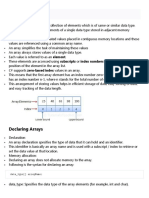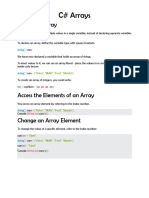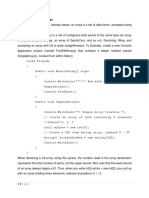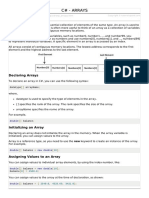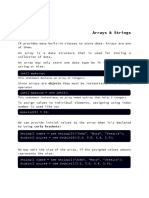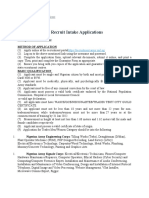0% found this document useful (0 votes)
28 views35 pagesC#.net Arrays
The document provides a comprehensive overview of arrays in C#, including their definition, types (single-dimensional, multidimensional, and jagged), and advantages and disadvantages. It explains how to declare, initialize, and access array elements, as well as the methods available for manipulating arrays. Additionally, it highlights the use of LINQ methods and the structure of multidimensional and jagged arrays.
Uploaded by
Anantoju SravanthiCopyright
© © All Rights Reserved
We take content rights seriously. If you suspect this is your content, claim it here.
Available Formats
Download as PPTX, PDF, TXT or read online on Scribd
0% found this document useful (0 votes)
28 views35 pagesC#.net Arrays
The document provides a comprehensive overview of arrays in C#, including their definition, types (single-dimensional, multidimensional, and jagged), and advantages and disadvantages. It explains how to declare, initialize, and access array elements, as well as the methods available for manipulating arrays. Additionally, it highlights the use of LINQ methods and the structure of multidimensional and jagged arrays.
Uploaded by
Anantoju SravanthiCopyright
© © All Rights Reserved
We take content rights seriously. If you suspect this is your content, claim it here.
Available Formats
Download as PPTX, PDF, TXT or read online on Scribd
/ 35







